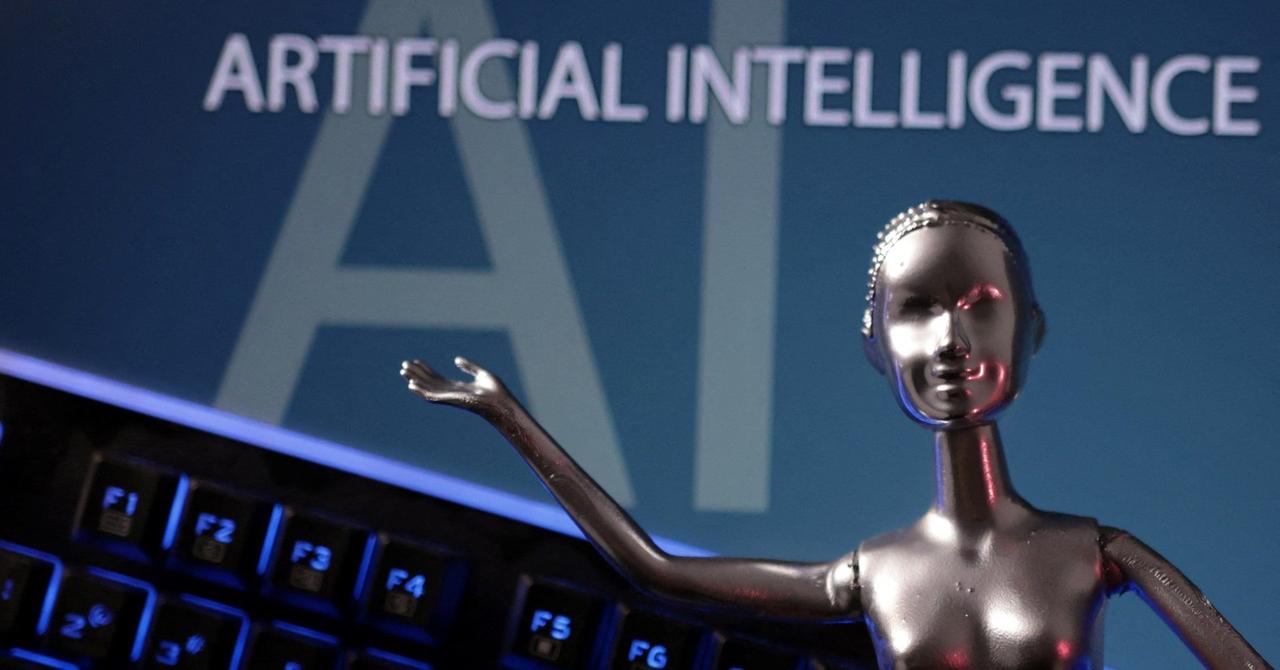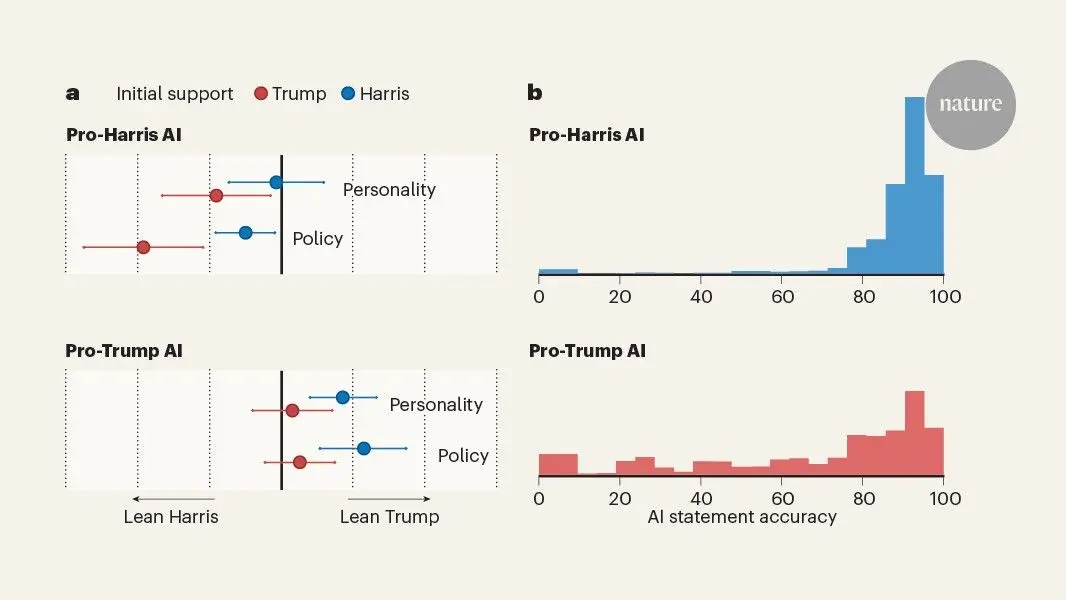AI Market Set to Soar to $990 Billion by 2027, Driven by Rapid Adoption and Innovation
7 Sources
7 Sources
[1]
AI Market Poised to Reach $990 Billion by 2027: Report
The market for AI-related hardware and software is expected to grow between 40% and 55% annually, reaching between $780 billion and $990 billion by 2027, according to new research released today by Bain & Company. The fifth annual Global Technology Report provides insights on the new waves of growth in the technology sector as a result of disruptions from the fast-changing AI advancements. Three areas of opportunities - bigger models and larger data centers, enterprise and sovereign AI initiatives, and software efficiency and capabilities - could enable the AI hardware and software market to come close to a trillion-dollar industry in the next three years.
[2]
Market for AI products and services could reach up to $990 billion by 2027: report
The report provides insights on the new waves of growth in the technology sector as a result of disruptions from the fast-changing AI advancements.The market for AI-related hardware and software is expected to grow between 40% and 55% annually, reaching between $780 billion and $990 billion by 2027, Bain & Company said in its fifth annual Global Technology Report that was released on Tuesday. The report provides insights on the new waves of growth in the technology sector as a result of disruptions from the fast-changing AI advancements. It said there were three areas of opportunities - bigger models and larger data centers, enterprise and sovereign AI initiatives, and software efficiency and capabilities - that could enable the AI hardware and software market to come close to a trillion-dollar industry in the next three years. "Companies are moving beyond the experimentation phase and are beginning to scale generative AI across the enterprise. As they do, CIOs will need to maintain production-grade AI solutions that will enable companies to adapt to a landscape that is quickly shifting. Essentially, they need to adopt an 'AI everywhere' approach," David Crawford, chairman of Bain's Global Technology practice said in a statement. Further, the report observed that AI workloads could grow 25% to 35% per year through 2027. And as AI scales, the need for computing power will radically expand the scale of large data centers over the next five to 10 years. The report said AI will spur growth in data centers, from today's 50-200 megawatts to more than a gigawatt. This means that if large data centers cost between $1 billion and $4 billion today, they could cost between $10 billion and $25 billion five years from now. In addition to the need for more data centers, the AI-driven surge in demand for graphics processing units (GPUs) could increase total demand for certain upstream components by 30% or more by 2026. Just as the pandemic created a surge in PC demand, surging demand for AI computing power will strain supply chains for data center chips, personal computers, and smartphones. "These trends, when paired with geopolitical tensions, could trigger the next shortage of semiconductors," the report warned. "If data center demand for current-generation GPUs were to double by 2026, not only would suppliers of key components need to increase their output, but makers of chip packaging components would need to nearly triple their production capacity to keep up with demand." Another area that Bain said would add an additional layer of complexity for technology companies is the emergence of "sovereign" AI blocs. Governments worldwide -- including Canada, France, India, Japan, and the United Arab Emirates -- are spending billions of dollars to subsidize sovereign AI. "Establishing successful sovereign AI ecosystems will be time-consuming and incredibly expensive," Anne Hoecker, head of Bain's Global Technology practice said. "While less complex in some ways than building semiconductor fabs, these projects require more than securing local subsidies. Hyperscalers and other big tech firms may continue to invest in localized AI operations that will ensure significant competitive advantages." The report highlighted that the arrival of generative AI has added pressure on software development companies to demonstrate greater efficiency. Generative AI appears to save about 10% to 15% of total software engineering time, according to Bain's survey of more than 200 companies from across industries. However, most companies aren't making the most of these savings, Bain found. "When implemented properly, generative AI could result in efficiency gains of 30% or more," Roy Singh, global head of Bain's Advanced Analytics practice said. "Using generative AI to achieve meaningful improvements in software development is possible but requires efforts that stretch beyond the introduction of coding assistants. When it comes to AI deployment, engineering teams should drive end-to-end efficiencies by incorporating other advanced techniques such as static analysis and covering the full software development lifecycle including product management, refactoring, code reviews, testing and build/release management."
[3]
Market for AI products and services can reach up to $990 billion by 2027, finds global consultancy Bain&Co
The market for AI-related hardware and software is expected to grow between 40 per cent and 55 per cent annually, reaching between $780 billion and $990 billion by 2027, new research released by Global Consultancy Bain & Company showed. Bain's new report -- fifth annual Global Technology Report -- provides insights on the new waves of growth in the technology sector as a result of disruptions from the fast-changing Artificial Intelligence (AI) advancements. Three areas of opportunities - bigger models and larger data centres, enterprise and sovereign AI initiatives, and software efficiency and capabilities - could enable the AI hardware and software market to come close to a trillion-dollar industry in the next three years. "Generative AI is the prime mover of the current wave of change, but it is complicated by post-globalization shifts and the need to adapt business processes to deliver value. Companies are moving beyond the experimentation phase and are beginning to scale generative AI across the enterprise. As they do, CIOs will need to maintain production-grade AI solutions that will enable companies to adapt to a landscape that is quickly shifting. Essentially, they need to adopt an 'AI everywhere' approach," David Crawford, Chairman of Bain's Global Technology Practice said. As AI scales, so will data centres AI workloads could grow 25 per cent to 35 per cent per year through 2027, Bain estimates. As AI scales, the need for computing power will radically expand the scale of large data centres over the next five to 10 years. AI will spur growth in data centres, from today's 50-200 megawatts to more than a gigawatt, according to Bain report. This means that if large data centres cost between $1 billion and $4 billion today, they could cost between $10 billion and $25 billion five years from now. These changes are expected to have huge implications on the ecosystems that support data centres including infrastructure engineering, power production, and cooling, as well as strain supply chains. In addition to the need for more data centres, the AI-driven surge in demand for graphics processing units (GPUs) could increase total demand for certain upstream components by 30 per cent or more by 2026, Bain predicts. Just as the pandemic created a surge in PC demand, surging demand for AI computing power will strain supply chains for data centre chips, personal computers, and smartphones. These trends, when paired with geopolitical tensions, could trigger the next shortage of semiconductors, Bain warns. If data centre demand for current-generation GPUs were to double by 2026, not only would suppliers of key components need to increase their output, but makers of chip packaging components would need to nearly triple their production capacity to keep up with demand. Emergence of sovereign AI Another area that Bain says will add an additional layer of complexity for technology companies is the emergence of "sovereign" AI blocs. The post-globalization movement in technology is spreading from the pandemic-era chip shortage to current data, security, and AI privacy concerns. Governments worldwide -- including Canada, France, India, Japan, and the United Arab Emirates -- are spending billions of dollars to subsidize sovereign AI. They're investing in domestic computing infrastructure and AI models developed within their borders and trained on local data. As the sovereign AI push picks up steam, those who emerge as leaders will be based on several determining factors. "Establishing successful sovereign AI ecosystems will be time-consuming and incredibly expensive," Anne Hoecker, head of Bain's Global Technology practice, said. "While less complex in some ways than building semiconductor fabs, these projects require more than securing local subsidies. Hyperscalers and other big tech firms may continue to invest in localized AI operations that will ensure significant competitive advantages." More efficient software The arrival of generative AI has added pressure on software development companies to demonstrate greater efficiency. Generative AI appears to save about 10 per cent to 15 per cent of total software engineering time, according to Bain's survey of more than 200 companies from across industries. However, most companies aren't making the most of these savings, Bain found. M&A in tech becomes more unpredictable Bain's research shows that persistent regulatory obstacles have prompted tech companies to shift their M&A activity away from deals intended to capture scale and toward deals intended to acquire access to new capabilities, products, or markets -- which Bain refers to as "scope deals." From 2015 to 2018, the percentage of tech industry scope deals increased from 50 per cent to 80 per cent, holding steady ever since. Over the past six years, scope deals have accounted for nearly 80 per cent of all tech industry M&A. That's a bigger share than in most other industries. Bain's research shows that tech is still heavily scrutinized and there's no sign that the popularity of tech-scope deals will give way to a return to massive-scale deals any time soon. If anything, M&A in the industry has become more unpredictable, Bain concluded. Other topics covered in this year's Bain report include areas where generative AI is already delivering, and why some software companies are seeing drops in customer success. SHARE Copy linkEmailFacebookTwitterTelegramLinkedInWhatsAppRedditPublished on September 25, 2024
[4]
AI global market may touch $990 bn by 2027 with 40-55% annual growth rate: Report
"AI will spur growth in data centers, from today's 50-200 megawatts to more than a gigawatt. This means that if large data centers cost between USD 1 billion and USD 4 billion today, they could cost between USD 10 billion and USD 25 billion five years from now," the report said.The global market for artificial intelligence (AI)-related products and services is expected to grow at an annual rate of 40-55 per cent, and can reach up to USD 990 billion by 2027, a report has said. Bain & Company's 5th annual Global Technology Report said AI workloads could grow about 25-35 per cent per year through 2027. "Bain estimates that the total addressable market for AI-related hardware and software will grow between 40 per cent and 55 per cent annually for at least the next three years, reaching between USD 780 billion and USD 990 billion by 2027. Fluctuations in supply and demand will create volatility along the way, but a long-term, durable trajectory seems like it is here to stay," it said. As AI expands, the need for computing power will radically expand the scale of large data centers over the next five to 10 years, it added. "AI will spur growth in data centers, from today's 50-200 megawatts to more than a gigawatt. This means that if large data centers cost between USD 1 billion and USD 4 billion today, they could cost between USD 10 billion and USD 25 billion five years from now," the report said. In addition to the need for more data centers, the AI-driven surge in demand for graphics processing units (GPUs) could increase total demand for certain upstream components by 30 per cent or more by 2026, the report projected. However, these trends could trigger a scarcity of semiconductors, it said. "If data center demand for current-generation GPUs were to double by 2026, not only would suppliers of key components need to increase their output, but makers of chip packaging components would need to nearly triple their production capacity to keep up with demand," it noted, adding that larger data centers could drive costs to USD 10-25 billion in five years. AI's disruptive growth will continue to reshape the tech sector, as innovation spreads beyond the hyperscalers to smaller cloud service providers (CSPs), enterprises, sovereigns, software vendors, and beyond, the report said. Storage technology will advance to accommodate the needs of generative AI, while the growing need for data preparation and mobility will spur growth in data management software. The report further said tech services will be in high demand in the medium term while customers lack the skills and expertise needed for AI deployment and data modernisation, but over time, significant portions of tech services will be replaced by software.
[5]
AI Market Will Surge to Near $1 Trillion by 2027, Bain Says
The global market for AI-related products is ballooning and will hit as much as $990 billion in 2027, as the technology's quick adoption disrupts companies and economies, Bain & Co. said. The market, including artificial intelligence-related services and hardware, will grow 40% to 55% annually from $185 billion last year, the consulting firm said in its fifth annual Global Technology Report released Wednesday. That will lead to revenue of $780 billion to $990 billion, Bain said.
[6]
The AI market could reach almost $1 trillion in 3 years
As top tech firms spend billions to develop and deploy generative artificial intelligence, the market for those products and services could reach almost $1 trillion in three years, according to a new report. The total addressable market (TAM) for AI-related hardware and software is estimated to grow between 40% and 55% each year for at least the next three years, according to consulting firm Bain's global technology report. That means the TAM -- which refers to the potential overall revenue of a product or service if it has 100% share of the market -- for AI could reach between $780 billion and $990 billion by 2027, according to Bain. While there will be "fluctuations in supply and demand," Bain sees a "long-term, durable trajectory" continuing for the foreseeable future. "Companies are moving beyond the experimentation phase and are beginning to scale generative AI across the enterprise," David Crawford, chairman of the global technology practice at Bain, said in a statement. "As they do, CIOs [chief innovation officers] will need to maintain production-grade AI solutions that will enable companies to adapt to a landscape that is quickly shifting. Essentially, they need to adopt an 'AI everywhere' approach." Bain identified "three centers of innovation" that will drive market growth, from cloud service providers leading the way with larger AI models and data centers, to enterprises and sovereign countries adopting AI technology. As tech companies race to develop more powerful generative AI models, the report says "executives must now grapple with an additional layer of complexity and opportunity: the emergence of 'sovereign' AI blocs around the world." Due to COVID-19 pandemic disruptions and geopolitical tensions between the U.S. and China, companies have sought to make "more resilient" supply chains, leading to "new semiconductor hubs" in countries including India, Germany, and Japan, the report says. Now, the same shift is happening in other parts of the tech industry, according to the report, with governments around the world subsidizing sovereign AI by investing billions of dollars in "domestic computing infrastructure and AI models developed within their borders, trained on local data and languages." Bain estimates the amount of AI processing could grow 25% to 35% annually over the next three years, which could lead to an increase in demand for large data centers in the next five to 10 years. Today's data centers use about 50 to 200 megawatts of power and cost between $1 billion and $4 billion. In five years, the growth in AI workloads could spur data centers to grow to over a gigawatt, costing between $10 billion to $25 billion, the report says. On top of data center growth will be the demand for graphics processing units (GPUs), which power AI models. The GPU demand "could increase total demand for certain upstream components by 30% or more by 2026," Bain estimates. Along with geopolitical tensions, Bain estimates "surging demand for AI computing power" will drive a chip shortage similar to the one caused by the COVID-19 pandemic.
[7]
Market for AI products and services could reach up to $990 billion by 2027, finds Bain & Company's 5th annual Global Technology Report
Larger data centers could drive costs to between $10 billion and $25 billion in five yearsDemand for upstream components could rise 30% or more by 2026, creating next chip shortage"Sovereign AI" and enterprise concerns on cost and data privacy create opportunities for small language models SAN FRANCISCO, Sept. 25, 2024 /PRNewswire/ -- The market for AI-related hardware and software is expected to grow between 40% and 55% annually, reaching between $780 billion and $990 billion by 2027, according to new research released today by Bain & Company. The fifth annual Global Technology Report provides insights on the new waves of growth in the technology sector as a result of disruptions from the fast-changing AI advancements. Three areas of opportunities - bigger models and larger data centers, enterprise and sovereign AI initiatives, and software efficiency and capabilities - could enable the AI hardware and software market to come close to a trillion-dollar industry in the next three years. "Generative AI is the prime mover of the current wave of change, but it is complicated by post-globalization shifts and the need to adapt business processes to deliver value. Companies are moving beyond the experimentation phase and are beginning to scale generative AI across the enterprise. As they do, CIOs will need to maintain production-grade AI solutions that will enable companies to adapt to a landscape that is quickly shifting. Essentially, they need to adopt an 'AI everywhere' approach," said David Crawford, chairman of Bain's Global Technology practice. As AI scales, so will data centers; industry could face next wave of chip shortage AI workloads could grow 25% to 35% per year through 2027, Bain estimates. As AI scales, the need for computing power will radically expand the scale of large data centers over the next five to 10 years. AI will spur growth in data centers, from today's 50-200 megawatts to more than a gigawatt, Bain reports. This means that if large data centers cost between $1 billion and $4 billion today, they could cost between $10 billion and $25 billion five years from now. These changes are expected to have huge implications on the ecosystems that support data centers including infrastructure engineering, power production, and cooling, as well as strain supply chains. In addition to the need for more data centers, the AI-driven surge in demand for graphics processing units (GPUs) could increase total demand for certain upstream components by 30% or more by 2026, Bain predicts. Just as the pandemic created a surge in PC demand, surging demand for AI computing power will strain supply chains for data center chips, personal computers, and smartphones. These trends, when paired with geopolitical tensions, could trigger the next shortage of semiconductors, Bain warns. If data center demand for current-generation GPUs were to double by 2026, not only would suppliers of key components need to increase their output, but makers of chip packaging components would need to nearly triple their production capacity to keep up with demand. Emergence of sovereign AI presents both challenges and opportunities Another area that Bain says will add an additional layer of complexity for technology companies is the emergence of "sovereign" AI blocs. The post-globalization movement in technology is spreading from the pandemic-era chip shortage to current data, security, and AI privacy concerns. Governments worldwide -- including Canada, France, India, Japan, and the United Arab Emirates -- are spending billions of dollars to subsidize sovereign AI. They're investing in domestic computing infrastructure and AI models developed within their borders and trained on local data. As the sovereign AI push picks up steam, those who emerge as leaders will be based on several determining factors. "Establishing successful sovereign AI ecosystems will be time-consuming and incredibly expensive," said Anne Hoecker, head of Bain's Global Technology practice. "While less complex in some ways than building semiconductor fabs, these projects require more than securing local subsidies. Hyperscalers and other big tech firms may continue to invest in localized AI operations that will ensure significant competitive advantages." Similarly, as enterprises face rising challenges in managing suppliers, protecting data, and controlling total cost of ownership, small language models with algorithms that use RAG (retrieval-augmented generation) and vector embeddings (numeric representations of data) could see demand increase as these handle a lot of the computing, networking, and storage tasks close to where the data is stored. More efficient software development needed to drive value The arrival of generative AI has added pressure on software development companies to demonstrate greater efficiency. Generative AI appears to save about 10% to 15% of total software engineering time, according to Bain's survey of more than 200 companies from across industries. However, most companies aren't making the most of these savings, Bain found. "When implemented properly, generative AI could result in efficiency gains of 30% or more," said Roy Singh, global head of Bain's Advanced Analytics practice. "Using generative AI to achieve meaningful improvements in software development is possible but requires efforts that stretch beyond the introduction of coding assistants. When it comes to AI deployment, engineering teams should drive end-to-end efficiencies by incorporating other advanced techniques such as static analysis and covering the full software development lifecycle including product management, refactoring, code reviews, testing and build/release management." The above pressures come as software companies see slows in revenue growth. The median annual revenue growth for a group of about 90 publicly traded software-as-a-service (SaaS) companies declined by 16 percentage points in the last two years, Bain's analysis shows. As growth slowed, SaaS companies significantly scaled back spending on sales and marketing, while spending on R&D has proved more robust. Software companies' sales and marketing budgets have shrunk from 41% of revenue in 2022 to 33% of revenue in 2024, while spending on R&D shrunk by just 3 percentage points declining from 21% to 18% of revenue during the same period. Software companies will need to ensure they're producing what customers need, make the most of their R&D spend, and rein in inflating operating expenses. Software vendors, on the other hand, should be more disciplined in deciding what to build and sell, and be clearer about their product strategy. M&A in tech becomes more unpredictable Bain's research shows that persistent regulatory obstacles have prompted tech companies to shift their M&A activity away from deals intended to capture scale and toward deals intended to acquire access to new capabilities, products, or markets -- which Bain refers to as "scope deals." From 2015 to 2018, the percentage of tech industry scope deals increased from 50% to 80%, holding steady ever since. Over the past six years, scope deals have accounted for nearly 80% of all tech industry M&A. That's a bigger share than in most other industries. Bain's research shows that tech is still heavily scrutinized and there's no sign that the popularity of tech scope deals will give way to a return to massive scale deals any time soon. If anything, M&A in the industry has become more unpredictable, Bain concludes. "The technology sector is no stranger to disruptions, and as a result, we are used to seeing massive changes across the industry leaderboard every 10 years. Recently, however, the most valuable technology companies have shown remarkable resilience, holding spots at the top for many years and expanding their share of market value. Their success relies on their ability to identify disruptive trends and successfully scale and commercialize them, creating 'winner takes most' dynamics. For this decade, whoever masters the AI disruption will win big," concluded Crawford. Other topics covered in this year's report include areas where generative AI is already delivering, and why some software companies are seeing drops in customer success. Media contacts To arrange an interview or for any questions, please contact: Dan Pinkney (Boston) -- Email: [email protected] Gary Duncan (London) -- Email: [email protected] Ann Lee (Singapore) -- Email: [email protected] About Bain & Company Bain & Company is a global consultancy that helps the world's most ambitious change makers define the future. Across 65 cities in 40 countries, we work alongside our clients as one team with a shared ambition to achieve extraordinary results, outperform the competition, and redefine industries. We complement our tailored, integrated expertise with a vibrant ecosystem of digital innovators to deliver better, faster, and more enduring outcomes. Our 10-year commitment to invest more than $1 billion in pro bono services brings our talent, expertise, and insight to organizations tackling today's urgent challenges in education, racial equity, social justice, economic development, and the environment. We earned a platinum rating from EcoVadis, the leading platform for environmental, social, and ethical performance ratings for global supply chains, putting us in the top 1% of all companies. Since our founding in 1973, we have measured our success by the success of our clients, and we proudly maintain the highest level of client advocacy in the industry. View original content to download multimedia:https://www.prnewswire.com/news-releases/market-for-ai-products-and-services-could-reach-up-to-990-billion-by-2027-finds-bain--companys-5th-annual-global-technology-report-302257755.html SOURCE Bain & Company Market News and Data brought to you by Benzinga APIs
Share
Share
Copy Link
A new report by global consultancy Bain & Co. predicts the artificial intelligence market could reach $990 billion by 2027. This explosive growth is fueled by widespread adoption across industries and continuous technological advancements.

AI Market Poised for Exponential Growth
The artificial intelligence (AI) market is on track for unprecedented expansion, with a new report by global consultancy Bain & Co. projecting its value to reach up to $990 billion by 2027
1
. This forecast represents a staggering compound annual growth rate (CAGR) of 40-55% over the next four years, highlighting the rapid acceleration of AI adoption across various sectors4
.Driving Factors Behind AI's Surge
The remarkable growth in the AI market is attributed to several key factors. Firstly, there's a growing recognition of AI's potential to enhance productivity and drive innovation across industries. Secondly, advancements in computing power and data availability have made AI more accessible and effective. Lastly, increased investment in AI research and development by both private and public sectors has accelerated technological progress
2
.Generative AI: A Game-Changer
A significant portion of this growth is expected to come from generative AI, which could contribute between $200 billion to $300 billion to the overall market by 2027. This subset of AI technology, capable of creating new content and solutions, is seen as a transformative force across multiple industries
3
.Industry-wide Impact
The report highlights that AI's influence extends beyond the tech sector. Industries such as financial services, retail, and healthcare are increasingly integrating AI solutions to improve operations, enhance customer experiences, and drive innovation. This widespread adoption is a key driver of the market's explosive growth
5
.Related Stories
Challenges and Considerations
Despite the optimistic outlook, the report also acknowledges potential challenges. These include regulatory hurdles, ethical concerns, and the need for skilled AI professionals. Additionally, organizations must navigate issues related to data privacy and security as they implement AI solutions
4
.Global AI Landscape
The United States currently leads in AI development and adoption, but other regions are rapidly catching up. China, in particular, is making significant strides in AI research and implementation. The report suggests that this global competition will further fuel innovation and market growth
5
.As AI continues to evolve and permeate various aspects of business and society, its market value is set to skyrocket. With projections nearing the trillion-dollar mark by 2027, the AI industry stands on the brink of a transformative era, promising to reshape the global economic landscape in the years to come.
References
Summarized by
Navi
[3]
Related Stories
AI Industry Faces $800 Billion Revenue Shortfall by 2030, Bain Report Warns
23 Sept 2025•Business and Economy

Big Tech's AI Spending Surge: Citigroup Forecasts $2.8 Trillion by 2029
30 Sept 2025•Business and Economy

Big Tech's AI Spending Spree: Reshaping the Economy and Raising Concerns
02 Aug 2025•Business and Economy








